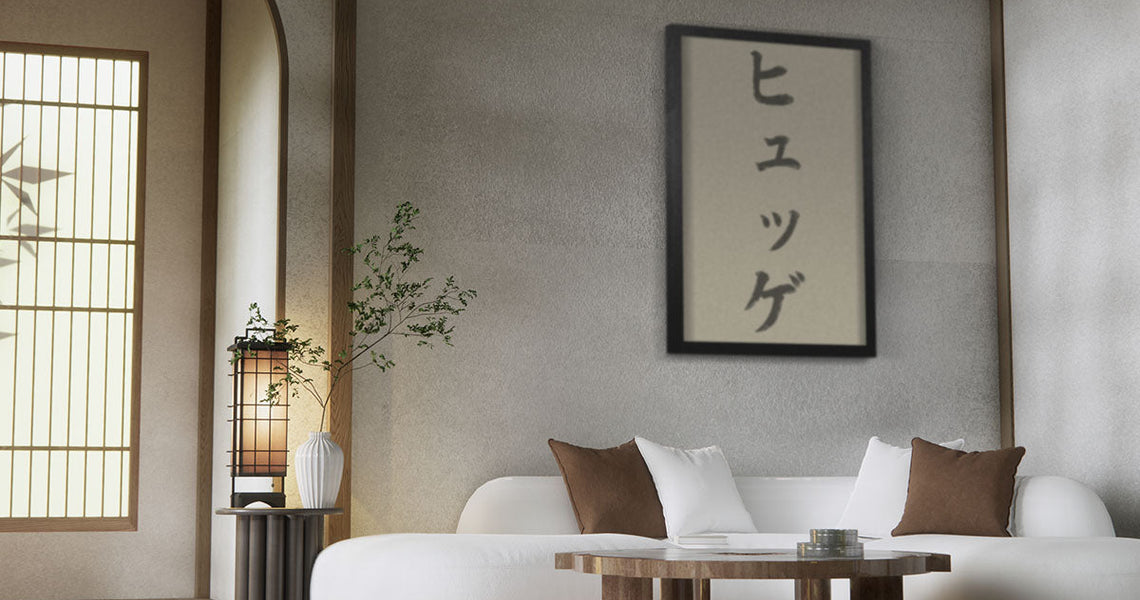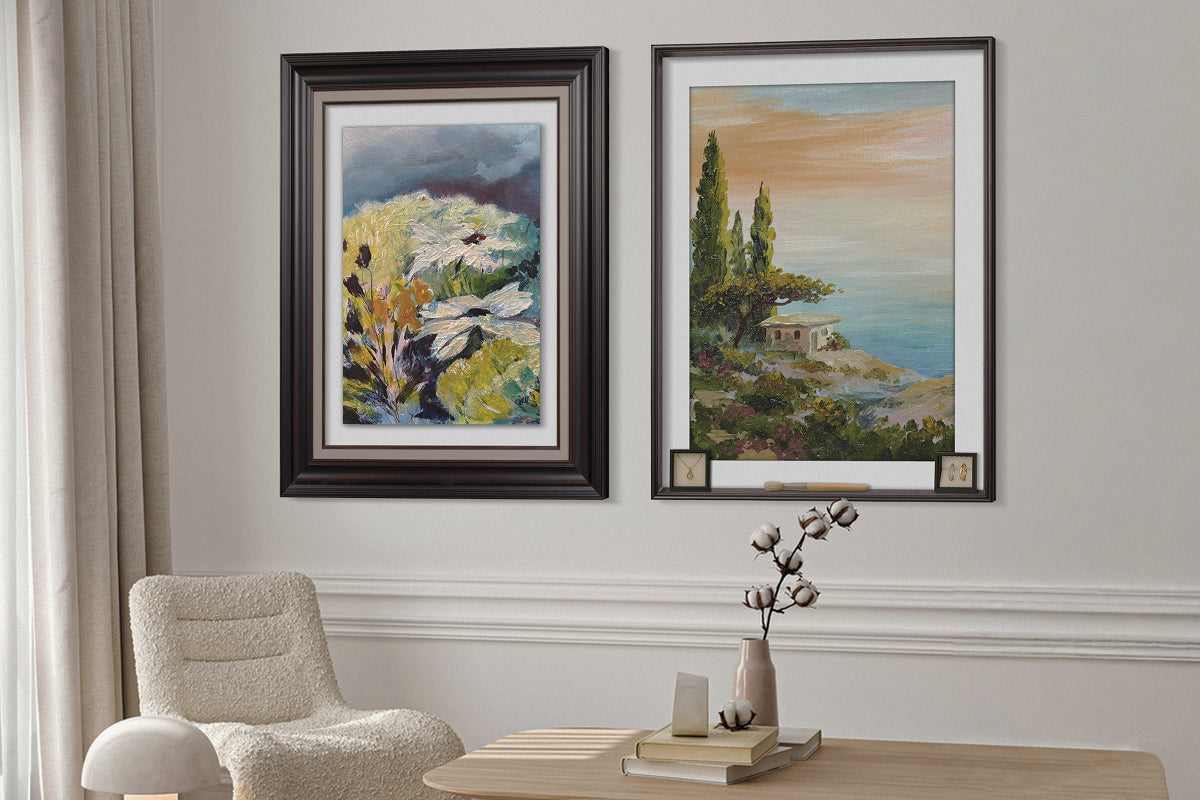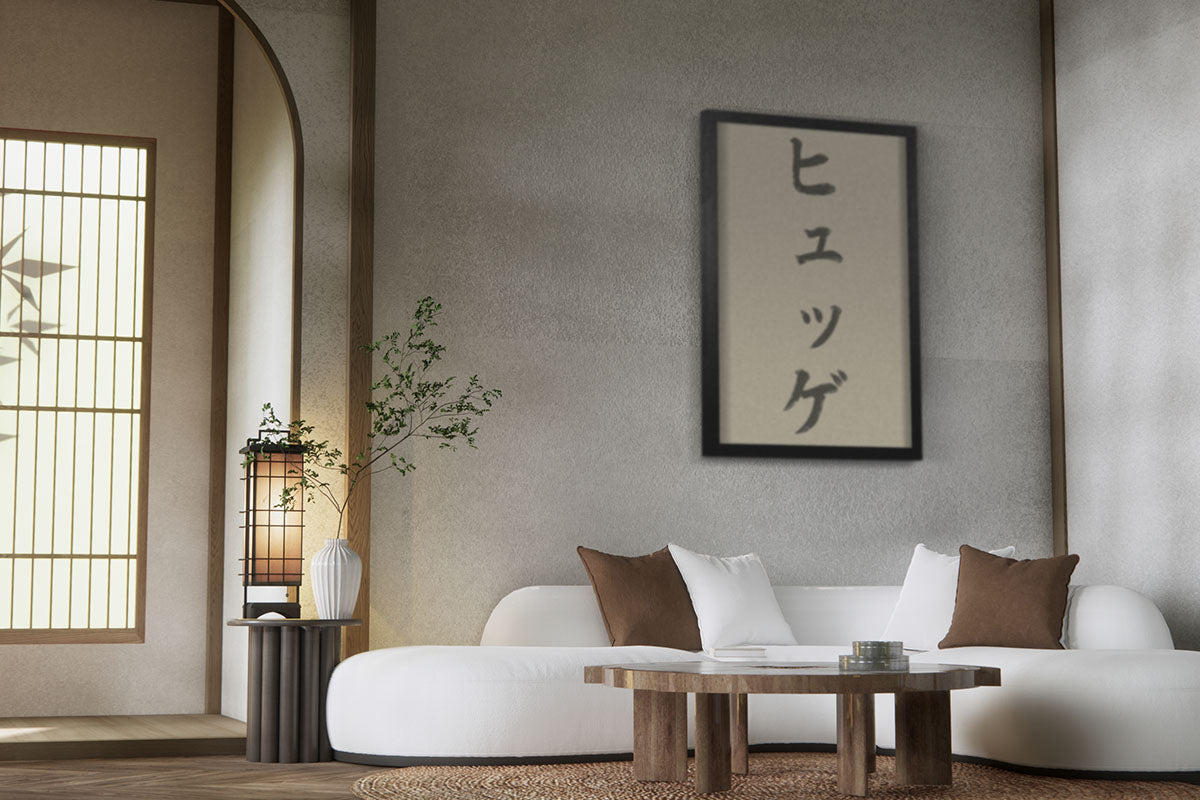With deep roots in more than 75 years of high-quality professional photography, our team of designers, artisans and craftspeople understand the value of a quality print, beautifully framed. You can count on that expertise in every finished piece.
The Japandi style is a beautiful blend of Scandinavian and Japanese aesthetics, combining the Nordic concept of Hygge—focused on comfort and coziness—with the Japanese principle of Wabi-Sabi, which celebrates the imperfect and the natural. This design approach prioritizes functionality, simplicity, and sustainability through the use of natural textures and calming colors. By uniting the best of both traditions, Japandi creates spaces that are both practical and serene.
Explore Japandi interiors, where Japanese minimalism meets Scandinavian warmth. Discover calming spaces with neutral palettes, natural materials, and thoughtful design.
Hygge, Wabi‑Sabi, And Japandi Origins
Japandi is shaped by two distinct yet complementary cultural philosophies. Hygge, a concept from Denmark, centers on warmth, comfort, and a sense of ease in daily life. Wabi-sabi, rooted in Japanese tradition, values imperfection, the passage of time, and the natural irregularities found in organic forms.
When these approaches to living and design are combined, they produce an aesthetic that emphasizes intentionality over excess. Scandinavian interiors contribute functionality, simplicity, and a focus on well-being, while Japanese interiors bring harmony, restraint, and an appreciation for subtle detail.
Living The Minimalist Lifestyle

Japandi design promotes clutter-free, minimalist living by valuing thoughtful functionality over excess. In this style, each element has a distinct purpose, and open, tidy spaces are maintained through smart storage solutions like minimalist shelving and concealed compartments.
Natural materials, calming color palettes, and decluttered spaces define Japandi design. The result? A soothing, meditative ambiance with a strong connection to nature.
Neutral Colors And Organic Materials
Neutral colors are crucial for Japandi-style serenity, providing calming and balanced undertones that enhance the look of organic materials. Subtle shades like beige, taupe, soft grey, and muted green offer a soothing and stable backdrop, making it easy to unwind.
It’s no wonder organic materials are gaining popularity in the interior design world, particularly with eco-friendly and Japandi trends on the rise. Solid wood pieces are known for longevity and timeless appeal, while rattan furniture and tatami mats introduce an earthy vibe. Even the framed art on your walls can elevate your natural décor if you use wooden picture frames. The possibilities are endless!
Bring Japandi magic into your space through the fusion of neutral hues and materials like wood, rattan, jute, and tatami. The interplay of Scandinavian and Japanese design sensibilities creates a grounded, understated charm that feels effortlessly in tune with nature.
Warm Neutral Colors And Earthy Tones

Japandi interiors thrive on calming, neutral color palettes accented by earthy shades and organic textures. The look is soft, warm, and grounded in the natural world.
For a harmonious Japandi palette, choose a neutral base, like beige or gray. Incorporate earthy tones, such as green, brown, and warm gray, with linen curtains, wooden furniture, area rugs, and feature walls. For an added touch, consider Japanese wood wall art and other minimalist wall décor.
Organic Materials And Textures

Organic materials and natural textures define Japandi living. Cotton, rattan, wood, and linen are sustainable, comfortable, and perfect for anyone looking to live simply and in touch with nature.
The interplay of natural wood furniture, rattan seating, and organic shaped furniture with linen curtains and cotton textiles fosters a peaceful setting in Japandi interiors. Add woven rugs or baskets for additional depth, and accentuate the theme with decorative bamboo plants, natural wood frames, and textured fabrics.
Designing Japandi Spaces For Home And Office
A hallmark of Japandi style is that it flows effortlessly from room to room. Neutral color palettes and natural materials like wood, stone, and rattan create a consistent sense of balance and continuity throughout the space. And a few well-chosen details—framed art, plants, Japanese-inspired accents—infuse each room with a unique character.
Living Room Inspiration With Biophilic Design

Japandi design uses light almost as a material in itself. Large windows or sliding doors open the living area to the landscape, while a few potted plants indoors keep the look consistently natural for biophilic interior design.
Bedrooms And Rest Spaces With Tatami And Rattan

Choose minimalist, modular furniture with hidden compartments to keep your Japandi bedroom serene and surface space clear. Use tatami mats—traditional or single fold—for meditation seating or lounging corners. Style open shelves with hand-picked décor, Japandi wall art, or well-chosen framed photos. Blend in Japandi-style rugs and natural fabrics, prioritizing eco-friendly materials such as solid wood and rattan.
Kitchen And Dining With Open Shelving

Open shelving suits a Japandi kitchen because everyday pieces stay visible and easy to reach. Group ceramic tableware sets, glass jars, and wood bowls by tone and material; keep overflow behind flat-front cabinets. For dining, use a compact round table with rattan chairs, add modular wood shelving for cookbooks and trays, and keep the palette warm and neutral.
Japandi Office And Workspace

Keep decoration restrained and purposeful. One piece of artwork in a wooden picture frame above the desk is enough, and a small plant adds a quiet biophilic note. Corral cords, use trays for stationery, and review surfaces weekly so the workspace stays orderly. This balances efficiency, comfort, and the calm character associated with Japandi interior design.
Framed Art And Japandi Décor

Framed art supports the Japandi aesthetic when kept simple and intentional. Our luxury picture frames work well with neutral tones and natural textures, and the Virtual Framer makes it easy to test mat and frame combinations before finalizing a design. Together, these elements sustain Japandi’s focus on restraint, authenticity, and harmony.







